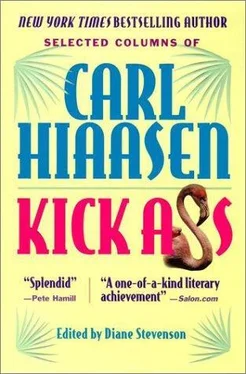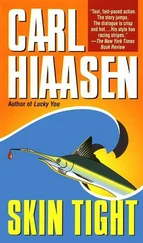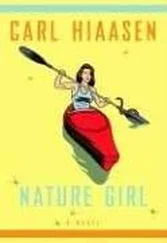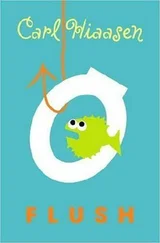Six hundred thousand souls who had never been through one of your hurricanes actually evacuated when they were told to do so. Elsewhere that might be routine behavior, God, but down here it's close to a miracle. Moses himself would have a hard time rousting the roller-bladers from South Beach.
All that valiant preparation—and still the community lies devastated. What did we expect? Aim a hurricane's fury at four million people and the only possible outcome is a horror.
We had been warned, again and again. The people who should've been listening were too busy counting their campaign contributions from big developers. Now, as always, the suffering is heaped on the most helpless—those whose only sin was buying into the Florida dream.
The only good to come from Andrew would be a resolve not to let it happen again. We can't change the course of hurricanes, but we can damn sure build houses with walls that don't disintegrate and roofs that don't peel like rotted bananas.
It's been about 30 years since South Florida got nailed by a big storm. You probably figured we needed a reminder. Next time, don't wait so long. Send us a modest, midsize hurricane every couple of years, and soon Florida will have some of the world's sturdiest and most sensible housing developments.
Thirty years was plenty of time for us to screw up. We got lax, we got greedy. We quintupled the population and idiotically called it progress. Now it's a disaster area.
God, please don't say you told us so. We got the message.
And thanks for not making it worse.
Blustery talk about Andrew is all hot air
October 18, 1992
Don't buy the breathless hype that Hurricane Andrew was "The Big One." It wasn't, not by a long shot.
The Big One won't strike the most thinly populated stretch of South Florida, the way Andrew did. The Big One scores a dead hit on downtown Miami, Hialeah or Fort Lauderdale.
Unlike Andrew, the Big One won't blow through in a few frantic hours. It parks on top of us for two or three horrifying days, dumping enough rain to flood most neighborhoods to ruin.
And the Big One won't be a tightly packed storm, the way Andrew was. It'll be huge and rambling, like Camille, and its path of total destruction will breach three counties.
Not that Andrew was a pussy cat; it was a swift, powerful hurricane. Those who've had their lives shattered cannot imagine anything worse, and there isn't.
But to propagate the melodramatic notion that Andrew was a once-in-a-century catastrophe is not only scientifically wrong, it's morally reckless.
Understand that certain folks—politicians, developers and the building lobby—have a vested interest in promoting the myth of the Big One.
They want you to believe that Andrew was a freak storm with satanic powers, and that nothing could have prevented the mass destruction.
Rubbish. The only freakish thing about Andrew was that it hit us, for a change. It did what all Category Four storms do—tore the hell out of everything in its way. Another one equally fierce could hit next week, next month or next year.
The other day, the Latin Builders Association took out a full-page ad to whine about all the bad press that the construction industry is getting. The LBA implied that shoddy workmanship wasn't widespread, that Andrew's supernatural gusts were humanly unstoppable.
Especially if your contractor didn't bother to fasten your roof to your house.
Lennar, Arvida and other developers also are pitching the myth of the Big One: Hey, we sell sturdy homes. Nothing could have survived Andrew. (Except the low-cost houses built by Habitat for Humanity.)
While the companies try to cover their butts, homeowners are filing richly deserved lawsuits. A grand jury is convening (yes, again). Even the State Attorney's Office is on the prowl for indictments. More shocking revelations are sure to come.
Andrew exposed, at a terrible human cost, what happens when a system meant to protect citizens is poisoned by greed, politics, corruption and ineptitude.
Failure occurred at every step. The vaunted South Florida Building Code deliberately was weakened to allow faster, cheaper work. Staples instead of nails? Great idea! Wafer board instead of plywood? Hey, give it a try. What next—Lego blocks?
What were these idiots thinking? Clearly no one—from the builders to the inspectors to the buyers—had ever experienced a major hurricane. Responsible tradesmen warned of disaster, but nobody listened. Politicians such as Mayor Steve Clark sat zombielike while the regulations were neutered. Why bite the hand that bankrolls your re-election?
County Manager Joaquin Avino was in charge of building and zoning when some of the crummiest developments were approved. When an NBC reporter recently asked about those projects, Avino experienced a bout of prime-time amnesia. It was truly pathetic.
Andrew revealed the system for the incestuous charade that it is, and now the guilty parties are scrambling for cover. It's not our fault, they cry, it's Nature! Two hundred mile-per-hour winds! The Big One!
The Big Lie is what it is. So much preventable damage, so much unnecessary misery—it's not the storm of the century, it's the crime of the century.
Happy ending slow to come at country walk
May 6, 1993
Hi-ho, hi-ho.
It's off your roof did go.
We don't care if your house ain't there.
Hi-ho, hi-ho.
Once upon a time, there were 70 or 80 dwarfs who built a place called the Village Homes of Country Walk.
Some of the dwarfs were good workers, but others weren't. The bad dwarfs had names like Lazy, Dizzy, Drowsy, Greedy, Clumsy, Careless and Sleazy. They worked for a company called Walt Disney, which had a snow-white reputation.
One summer night, a fierce hurricane came from the sea. It huffed and it puffed and blew lots of houses down. The people of Country Walk were very surprised, for the dwarfs had promised that the condominiums were built solidly and would not fall apart in a strong wind.
After the storm, the residents went through the rubble of Country Walk and discovered many bad things about the way the dwarfs had built the homes. There were masonry walls with no steel bars for reinforcement, and sometimes no cement! There were wooden posts that hadn't been anchored to the foundations. There were roof trusses that weren't properly attached.
Country Walk was a disaster area, but it wasn't the only one. Across the land, people who lost everything in the hurricane were learning terrible facts about how poorly their houses had been constructed. Soon those people hired lawyers, who began to sue.
At first, the home-building companies said they didn't do anything wrong. They blamed all the damage on the hurricane, which they said was the most powerful storm in the history of the planet! But scientists who studied the hurricane, and engineers who studied the wrecked homes, disputed the builders. They said most damage resulted from cheesy construction.
Facing expensive and embarrassing trials, two companies did something very smart: They caved in, agreeing to give money to those who'd lost their homes in the storm.
A company called Lennar gave $2.4 million to customers in several neighborhoods where houses had disintegrated like match sticks. After deducting legal fees, each owner got about $3,800 from the settlement—a bargain for Lennar, which was one of the most profitable developers in the whole United States.
In the place known as Country Walk, a company called Arvida/JMB Partners agreed to give $2.74 million to the owners of 135 condos that were damaged or destroyed by the hurricane. In exchange, the customers promised not to sue Arvida, and thus spared the company months of humiliating public disclosures about the shabby quality of its Country Walk homes.
Читать дальше









